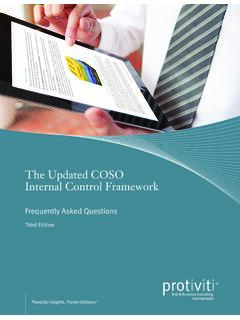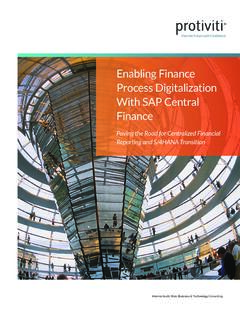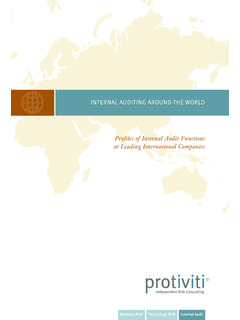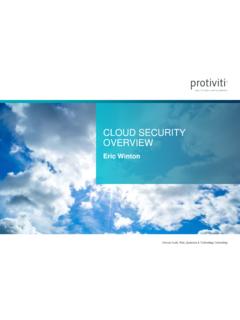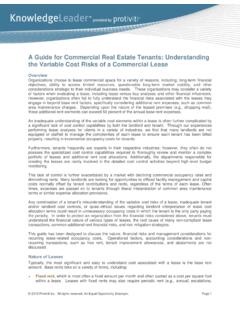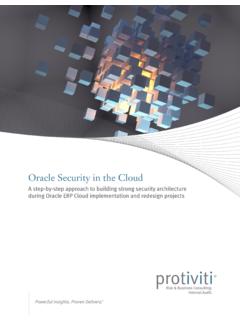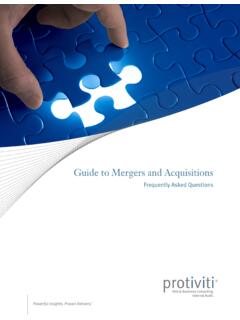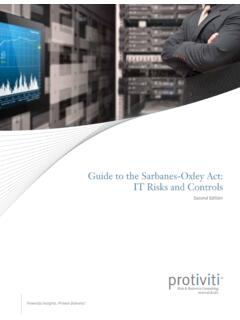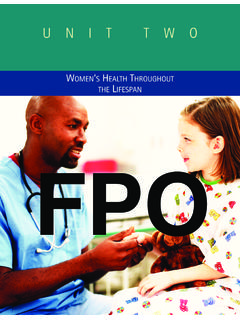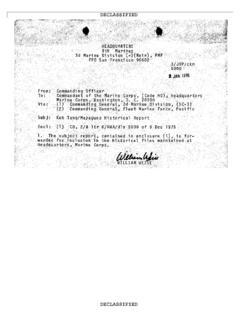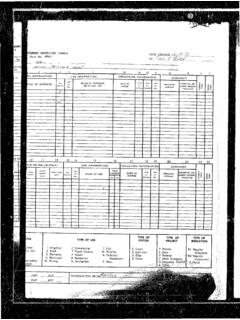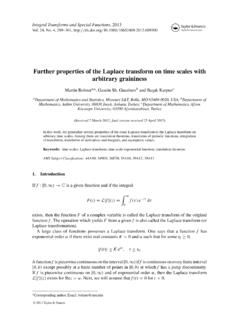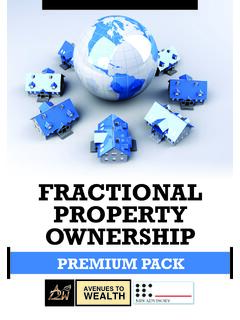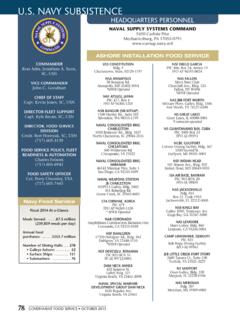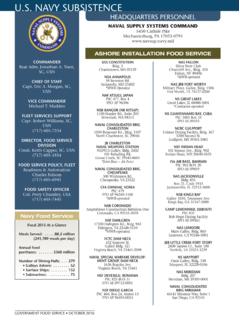Transcription of The Bulletin FPO Protiviti’s Review of Corporate Governance
1 Internal Audit, Risk, Business & Technology ConsultingAttributes for Facing the Future ConfidentlyIn a prior issue of The Bulletin ,1 we discussed attributes of organisations that are confident in executing strategy and advancing their respective visions successfully. We asserted that these attributes of confidence were important because executives and directors can use them to assess and advance their organisations along the journey to realise their vision. This issue of The Bulletin augments the prior issue by adding examples to illustrate the attributes in Attributes of Confidence We defined confidence in the prior issue of The Bulletin as the state of feeling certain about the truth of something and a feeling of self-assurance arising from one s appreciation of one s own abilities or qualities.
2 In addition, we raised three fundamental questions that are vital to facing the future with confidence:1. Directionally, do we know as an organisa-tion where we re going and why? 2. Are we prepared for the journey we are undertaking?These two questions are about knowing where we are headed and confirming that we are prepared. Are our people devoted to achieving a common future-state vision? Do we have a plan with a clear road map, as well as the capabilities and infrastructure in place to execute the plan and navigate the road map? Positive responses to these two questions are the price of entry to the high-stakes game of establishing sustainable competitive advantage, leading to the final question:3.
3 Do we possess the ability, will and disci-pline to cope with change along the way? 1 What It Means to Face Future Uncertainty Confidently, The Bulletin , Volume 6, Issue 4, available at BulletinProtiviti s Review of Corporate GovernanceVOLUME 6, ISSUE 2 The BulletinThis latter question is about whether we can get to our ultimate destination no matter what happens. Definitive, positive responses to these three questions enable organisational confidence in facing future uncertainty. The attributes that enable positive responses to these three questions are summarised in the schematic below:Attributes That Lay the Foundation The first three attributes of confidence represent what we refer to as a base level of confidence for doing business.
4 They represent the table stakes the price of entry that lay a solid foundation for engendering confi-dence. Take any one of these three attributes away and the organisation s leadership must take corrective action, and soon. We discuss these attributes further organisations share a commit-ment to a long-term vision. Confidence is maximised if there is a commitment to the enterprise s long-term vision, which provides its people a shared future pull perspective. That perspective fuels enterprisewide focus and energy to learn, encourages participation, and spawns an altruistic camaraderie so that people at all levels recognise that the enter-prise s success and their personal success are inextricably organisations seek clarity of, and are in touch with, the environment.
5 A confident organisation constantly reality tests its understanding of the market through an open and sharing culture that encourages dialogue and discussion up, down and across the enterprise, and in which people can share what they know and think as well as express disagreement without fear of repercussions. VISUALISE WHEREWE RE GOING AND WHYPREPARE FOR THE JOURNEYABILITY, WILL AND DISCIPLINE TO COPE WITH CHANGEH eightened Awareness of EnvironmentRequired Capabilities AlignedRisk-SavvyAggressive LearningPremium on CreativityUnwaveringly ResilientFace Future Uncertainty Conf identlyShared Commitment to 3 The BulletinFor example, a confident organisation imple-ments processes that facilitate real listening to customers, suppliers, employees and other stakeholders as sources of new learning.
6 Formal and informal continuous feedback loops flatten the organisation and enable systemic thinking in distilling and acting on the feedback received to drive continuous improvement and foster preparedness. Confident organisations align their capabilities. Every successful company has differentiating capabilities. Examples include an entity s superior know-how, innovative processes, proprietary systems, distinctive brands, collaborative cultures, and exclusive supplier and customer relation-ships. Appropriate policies, processes and organisation must be in place to support the company s strategy. In confident organisations, leaders ensure that the capabilities needed to differentiate the company and execute its strategy successfully are in place and appropriately Attributes That Sustain ConfidenceWhile important, a base level of confidence is not enough to face the future confidently.
7 Astute business leaders know that the ability, will and discipline to cope with change are also needed to advance their organisation s journey. Below we focus on these attributes for sustaining confidence using case organisations are risk-savvy. Few companies can boast of anything similar to the Walt Disney Company s legacy of making big bets to transform itself. After several setbacks, including bankruptcy in his early twenties, founder Walt Disney created a new cartoon character that would later become the symbol of the entire company. The early successes of Mickey Mouse gave Disney the confidence to keep taking calculated risks.
8 Despite concern about the profitability of cartoon shorts, Disney branched out into animated films, beginning with Snow White and the Seven Dwarfs in 1937. A resounding success, the movie positioned the company as a major force in Hollywood, paving the way for additional animated feature , Disney invested heavily in making another full-length animated film: Cinderella (1950). The production of the movie cost as much as US$50 million in today s dollars, a crippling cost that might have threatened the company s viability if the movie were a flop. But Cinderella became a blockbuster and is generally considered a classic American film of the 20th television emerged, Disney made long-term commitments for television projects while the major Hollywood studios pressured each other not to support televised productions, believing the medium would ruin the movie business.
9 The result of Disney s decision was exceptional: an array of classic programs that helped define early s success with the new medium enabled him to obtain the necessary finan-cing to build Disneyland, a theme park for families. Operating under Disney s high standards of customer service and attention to detail, Disneyland became a phenomenal success, spawning other parks and becoming a critical component of the Walt Disney Company Walt Disney s death in 1966, the company has followed in its founder s footsteps by taking calculated risks that have helped make one of the world s most well-known and beloved brands even more successful.
10 For example, after expanding its theme park operations and continuing its focus on feature films, the Walt Disney Company experienced an animation renaissance when it released several hugely 2 Of Failure and Success: The Journey of Walt Disney, by Jeff Kober, MousePlanet, Aug. 26, 2010: 4 The Bulletinsuccessful animated films in the late 20th century, including The Little Mermaid (1989), Beauty and the Beast (1991), and The Lion King (1994). It became a major media company with the purchase of Capital Cities/ABC in 1995. It launched the Disney Cruise Line in 1996, and acquired Pixar Animation Studios in 2006, Lucasfilm Ltd.

